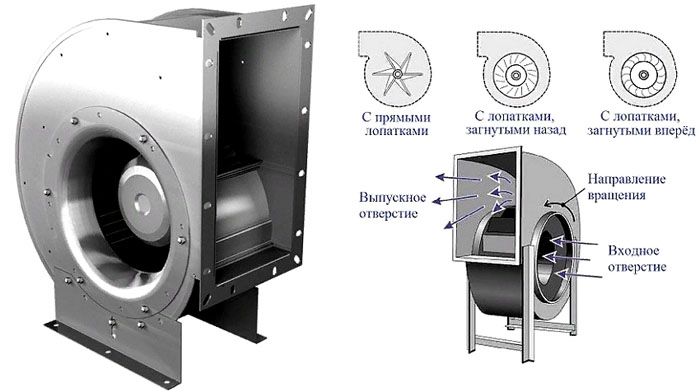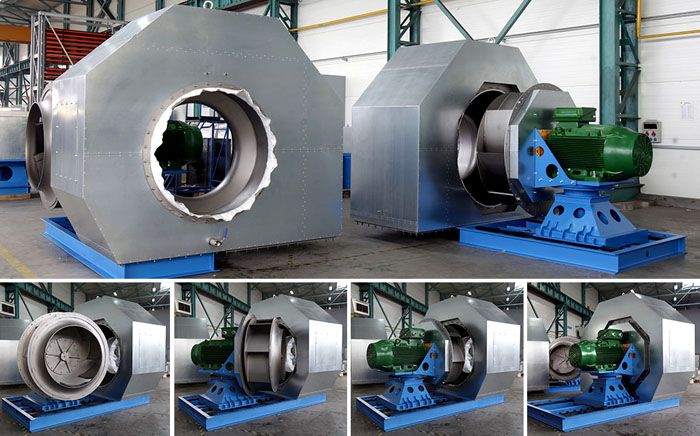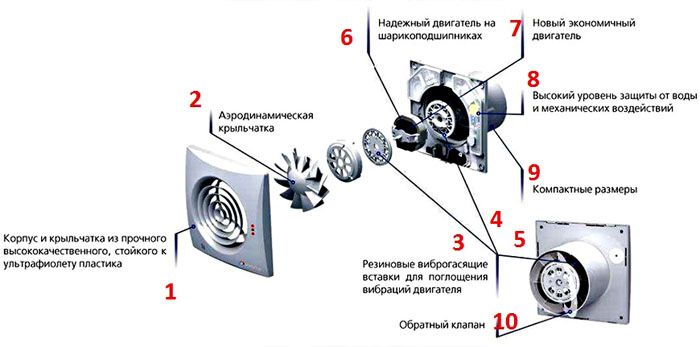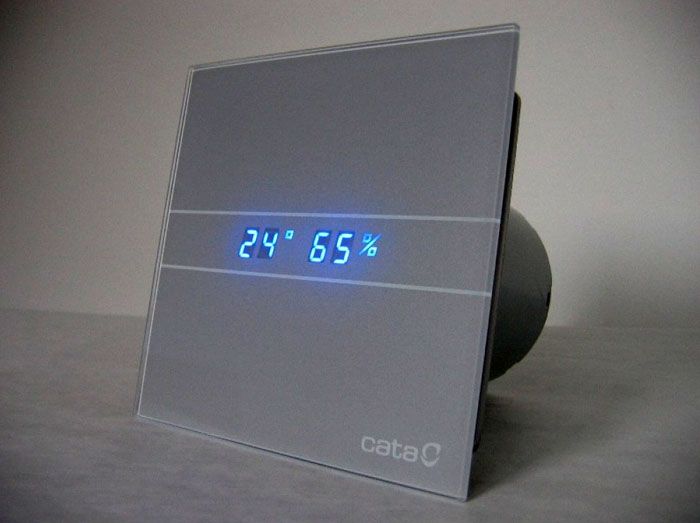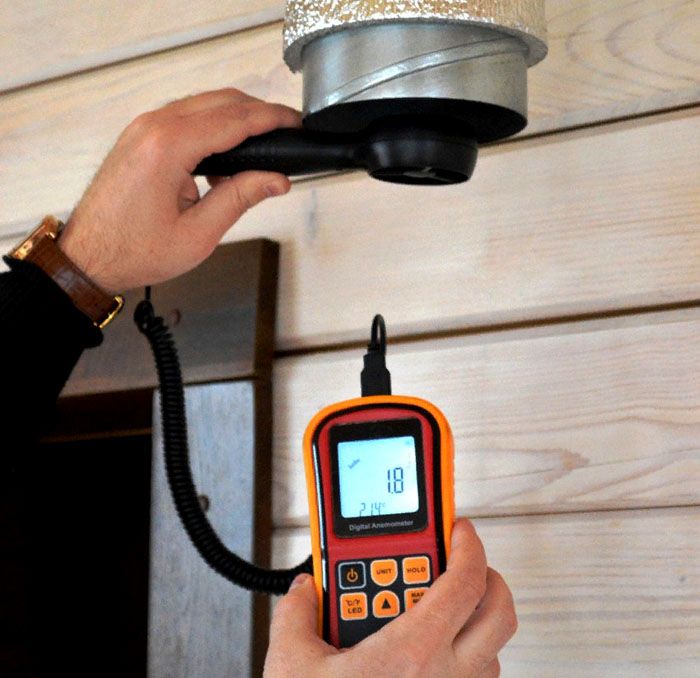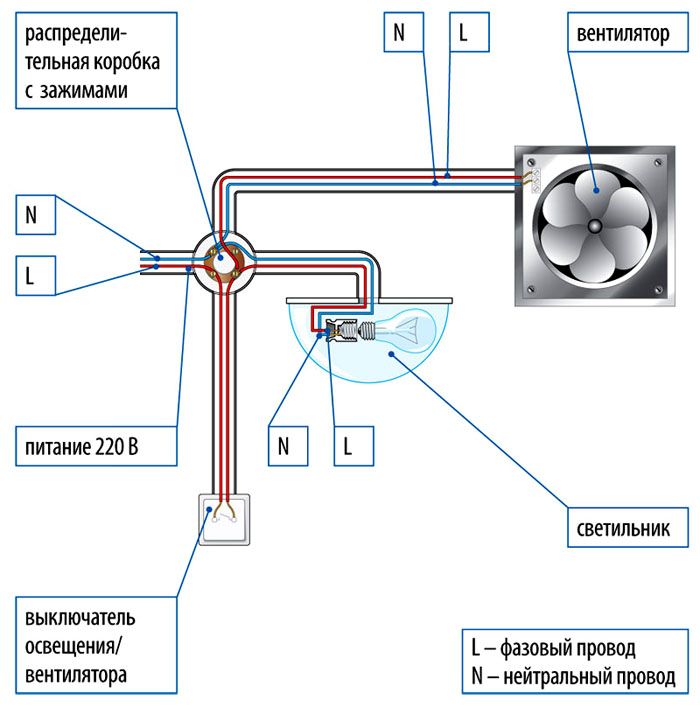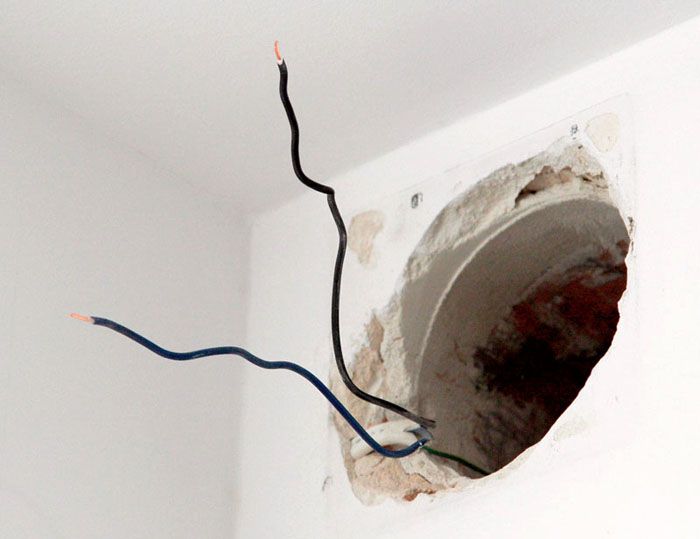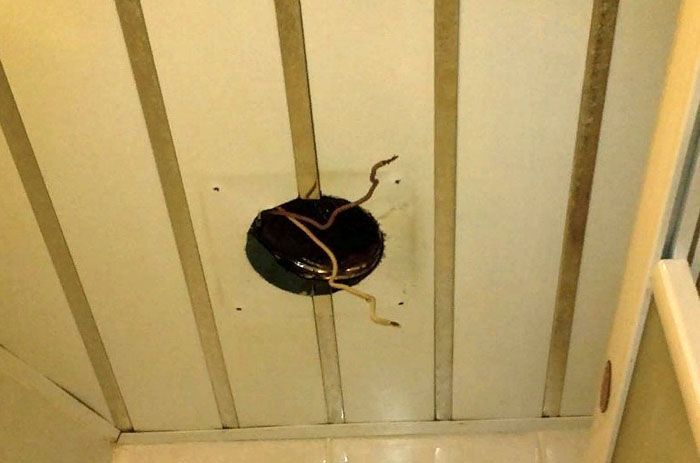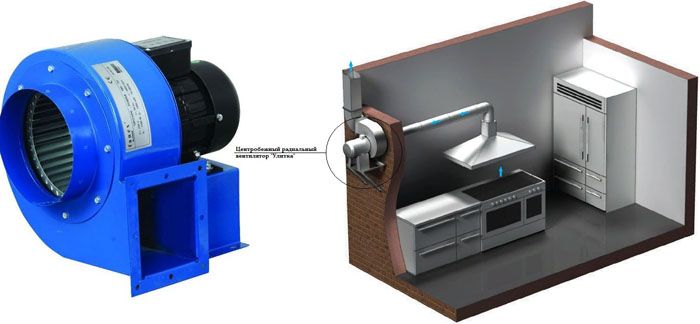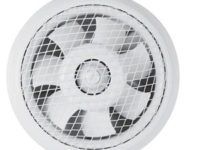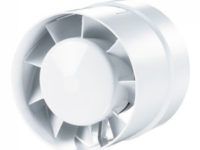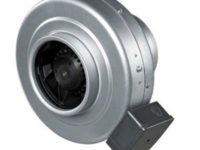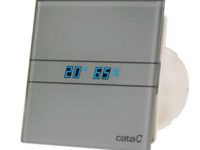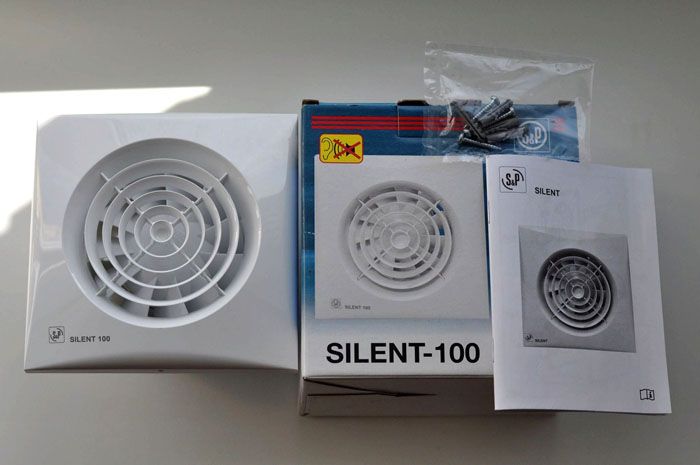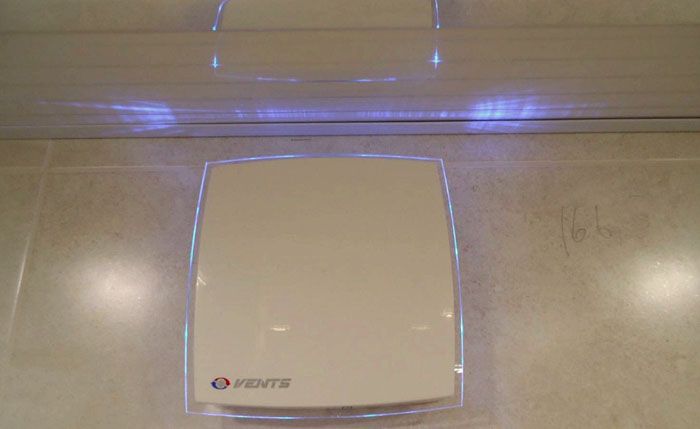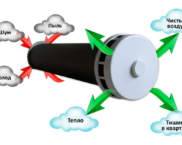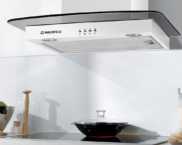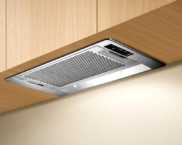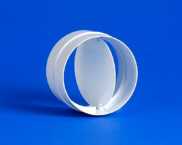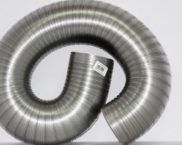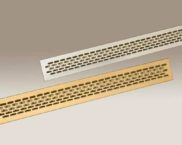Duct silent exhaust fans: from selection to operation
High-quality equipment of this category will help to organize the supply of fresh air and removal of contaminants at minimal cost. An additional bonus is the absence of uncomfortable sounds. In today's review, we will consider household duct silent exhaust fans. It provides information that will simplify the selection of the optimal model and will help you perform installation on your own.

Due to the wide range of products in the relevant market segment, there are natural difficulties in finding the best option.
The content of the article
- 1 Scope and basic requirements for duct fans
- 2 What duct silent exhaust fans offer profile manufacturers
- 3 Technical parameters of duct exhaust fans
- 4 How to choose a silent fan for the hood, taking into account the parameters of the room, other important factors
- 5 Installation and assembly of a silent duct fan: instructions with useful comments
- 6 How to extend the service life of a duct fan
- 7 Is it possible to repair the duct fan yourself
- 8 Prices, characteristics of modern models, recommendations for the correct purchase
- 9 Video: the process of installing a duct fan
Scope and basic requirements for duct fans
Rapid removal of fumes from the kitchen atmosphere prevents the formation of difficult stains on furniture, wallpaper, other parts of the interior. It should not be forgotten that some impurities can harm the human body. Effectively working equipment will eliminate unpleasant odors from the bathroom and high humidity... Such equipment performs preventive functions, eliminating favorable conditions for the vital activity of microorganisms.
An additional benefit of using exhaust fan is the possibility of a metered supply of fresh air. It will come in handy in winter, when too intense ventilation with a sharp drop in temperature will provoke colds.To choose the best option, you need to familiarize yourself with the features of modern designs.
It is imperative to check the compatibility of the exhaust fan with the available outlet duct. Useful:
- convenient control;
- easy installation;
- no difficulties in performing routine maintenance during operation;
- durability;
- minimum level of noise and vibration;
- reasonable cost.
What duct silent exhaust fans offer profile manufacturers
Equipment in this category is produced taking into account the standard sizes and shapes of air channels. The range of manufacturers includes hood fans with round, square and rectangular cases. In some cases, special transition assemblies are used for exact compatibility.
Such duct fans for circular ducts are often used in practice. With such an arrangement of the blades, high performance is ensured, but the loads on the mechanical parts are not too increased. When properly aligned, the journal bearings perform their function for a long service life without breakage. The shape of the housing is ideal for mounting in standard ventilation ducts. An additional "plus" is effective cooling, which extends the life of the electric motor, prevents overheating in long working cycles. The disadvantages include a relatively high level of sound vibrations. In inexpensive models, it is 30 ÷ 40 dB.
In such fans, the intake takes place according to the same principles as described above. In the same way (on the central axis) the motor is fixed. But here, with the help of a special shape of the blades and the internal channel, the outlet flow is expanded. This solution improves the airflow to the power drive at the same power consumption. It also helps to reduce the noise level.
This technique is created in different ways. The electric motor is installed on the same axis with the impeller, or connected by a belt drive. The second method is used in powerful industrial installations. By bending the blades back at the optimal angle, the designers manage to reduce the power consumption by 15 ÷ 20%. These extractor fans are highly resistant to stress. The slope in the opposite direction (forward) allows you to reduce the noise level, to obtain good performance at low speeds.
Typical household fans are installed in silent kitchen hoods. They are designed for continuous operation at an ambient temperature not exceeding + 80 ° С. Industrial equipment is created in a special (heat-resistant version). They also offer models that are resistant to corrosion processes. They produce structures that can maintain functionality when working in dusty rooms (the content of mechanical impurities is normalized at a level of 100 mg per 1 cubic meter).
In such models, sparks are prevented at the structural level. As a rule, gentle operating modes are used, without excessive overheating of individual parts. Install redundant protection systems that shut off the power supply to the hood fan in potentially hazardous situations.
Technical parameters of duct exhaust fans
The illustration shows the following components of a typical exhaust fan with non-return valve:
- The grate (1) prevents large objects from entering the work area. This part is made of quality plastic. It has neutral aesthetic characteristics to suit a variety of interior styles.
- The impeller shape (2) is selected based on the laws of aerodynamics. The goal of developing a quality product is high performance with minimal noise.
- The numbers 3, 4 and 5 indicate soft pads that dampen vibrations.
- The electric motor (6) is mounted on durable ball bearings that do not need to be lubricated during operation.
- Modern powertrain models are characterized by economical energy consumption. Their parts (7) are well cooled by the air flow.
- Seals (8) are installed in certain places to protect electrical components from contact with water.
- This part of the casing (9) of the exhaust fan corresponds to the diameter of a standard duct (similar standard sizes are used for high-quality docking of system components).
- Check valve (10) prevents the penetration of cold air and unpleasant odors from the general ventilation shaft into the room.
With the help of this table, it will be easier to study the current offers of specialized manufacturers:
| Options | Value Range / Options | Comments |
|---|---|---|
| Fan type | Axial, centrifugal | The corresponding classification is discussed in detail above. It should be noted that centrifugal models can also be used to solve everyday problems. Large equipment in this category is installed outside the contour of the main building. |
| Design | Channel, waybill. | The first option assumes installation directly in the channel. The second is visible mounting at the duct inlet. |
| Installation diameter, cm | 2-150 | Household models are available in sizes: 10; 12.5; 15; 20 cm. They correspond to the parameters of standard ventilation ducts. |
| Exhaust fan mounting location | Ceiling, wall, window, floor, inside the channel. | Each modification provides design features corresponding to the purpose. In particular, the possibility of installing the fan in a horizontal / vertical working position is of some importance. |
| Productivity, m3 / h | 24-15200 | Values for typical household models range from 40 to 150 cubic meters per hour. |
| Power consumption, W | 2-4800 | Typical home appliances perform their functions with an energy consumption of 4 to 20 W / h. |
| Control | Mechanical switch of cord type; separate button / switch; motion / humidity sensors; remote control. | Features of some control schemes are given in the next section of the article. |
| Noise level, dB | 18-270 | The "silent" category includes equipment with a noise level of 25 dB or less. |
| Impeller rotation frequency, rpm | 520-4400 | For an ordinary user, this indicator is secondary. An accurate estimate can be made based on performance and noise levels. |
| Speed regulation | Stepped (2, 3, 4 or 5 speeds), smooth. | A smooth change in the impeller speed is not always important. But the appropriate equipment increases the cost of the product. |
| Degree of protection | IP 22 (24; 34; 44; 45; 54; 55) | It is enough if the silent bathroom fan meets the IP24 standard or slightly higher. This option provides protection from mechanical particles with a size of 12, 5 mm and more, as well as from falling at any angle (deviation from the vertical) water drops. |
A removable panel simplifies the maintenance of the exhaust fan, removing dirt from the surface of the coarse filter mesh. It can be made of plastic, glass, metal. Aesthetic characteristics, strength, durability change accordingly.
How to choose a silent fan for the hood, taking into account the parameters of the room, other important factors
Taking into account the above information, it is not difficult to choose a 100 mm exhaust fan for a bathroom that will fit a certain channel. In this small room, where there are many smooth reflective surfaces, even quiet sounds can be heard. In order to eliminate discomfort while taking relaxing water procedures, it is recommended to choose a model with a noise of no more than 25 dB. For the kitchen, this parameter can be increased slightly.
Power consumption at a level of no more than 10 ÷ 30 W is insignificant, therefore additional requirements for electrical wiring absent.The simplest models (without control electronics) are difficult to damage even with large voltage surges.
If the indicated level of protection is not enough, it is not difficult to find a suitable option. The comparison should not exceed a reasonable level so as not to unduly increase the cost of the project. To prevent the penetration of particles from 1 mm (dust), select the model with the first digits in parameter IP4 (5). If reliable protection against strong jets of water (immersion in liquid) is required, select the corresponding second symbol: 5 (7).
To calculate the performance, you need to determine exactly the volume of the room using the formula:
O = L × W × H,
where all parameters are taken in the same units:
- ABOUT - volume;
- D - length;
- Sh - width;
- IN - height.
Consider an example with a bathroom: O = 2 x 3 x 2.8 = 16.8 cu. m. For this room, the number of complete air changes per hour is selected taking into account the number of users. The standard value for three people is 8. A small margin should be made to avoid difficulties during peak loads (15 ÷ 20%). The final required performance is: P = 16.8 × 8 × 1.2 = 160 cubic meters. m / hour. Therefore, a model with suitable parameters is selected for the calculation.
This technique with low power consumption (8 W) provides good performance (115 cubic meters / hour). It is equipped with a built-in timer that turns off the equipment with a delay of several minutes. Power supply can be done from a special button. It is also permissible to use the standard light switch, sensor of water concentration in the room atmosphere. In addition to the humidity level, the temperature is displayed on the screen.
Air intake is made through the side slots. Such an exhaust fan looks harmonious in modern interior... It can be installed horizontally / vertically (ceiling / wall). The removable glass panel can be easily cleaned of dirt and retains a perfect appearance over a long service life. The high level of protection (IP44) prevents breakdowns in harsh environments.
Installation and assembly of a silent duct fan: instructions with useful comments
You can personally find out the presence of traction by the deflection of the candle flame. A sheet of paper is also applied, which must be held by the flow of outgoing air. If this does not happen, you will have to install forced ventilation. According to the above criteria, a suitable model of equipment is selected.
Hardest to install wiring... Direct cable installation using this scheme is not a complicated procedure. The connections should be well insulated to prolong their service life in wet conditions. This problem can be successfully solved by using heat shrink tubing of a suitable diameter. However, the channel for the power network in the depths of the building structures is more difficult to make. We'll have to restore the broken decorative coating.
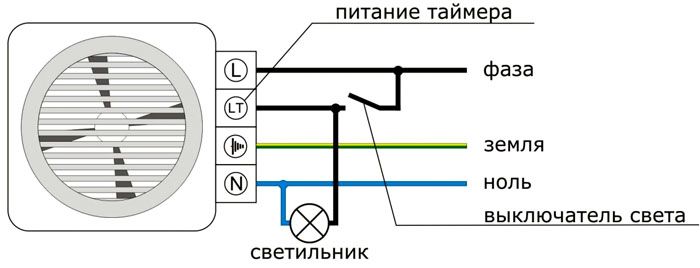
To connect a fan with a timer, or in another version, use the circuit recommended by the manufacturer
Electrical work is performed with the power off. Provide conditions in which accidental voltage supply is excluded. To check the phase, use a specialized indicator "screwdriver" or multimeter.
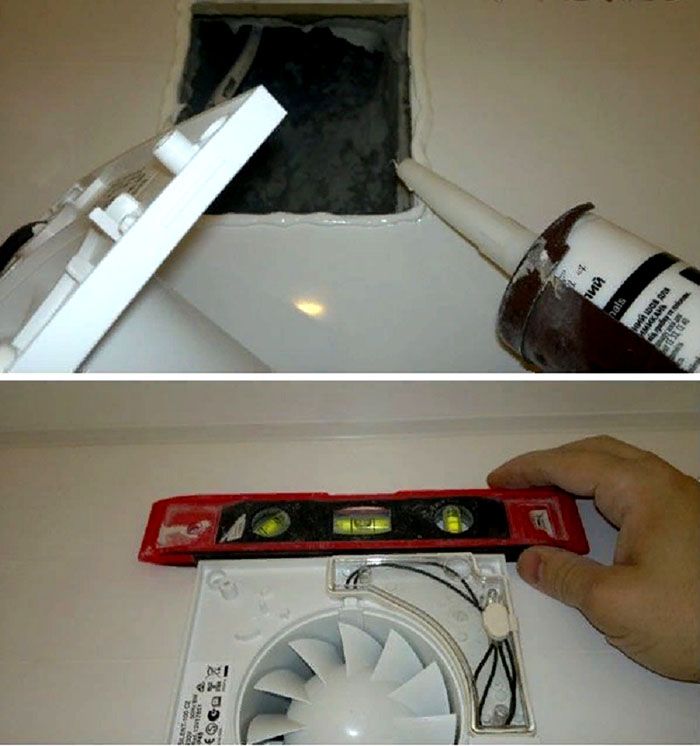
During the installation process, the horizontal position of the exhaust fan is controlled using a bubble level
The photo shows an example of a strong and fast fastening to "liquid nails". However, it should be borne in mind that dismantling the structure in this version will be difficult. For this reason, the use of conventional self-tapping screws looks preferable.
External mounting allows the noise source to be removed outside the living area. In this case, it is permissible to use a powerful fan for an industrial grade hood.At the final stage, a decorative protective cover is installed. Functionality is checked by a test run. Set the desired settings for the timer and other electronic components.
How to extend the service life of a duct fan
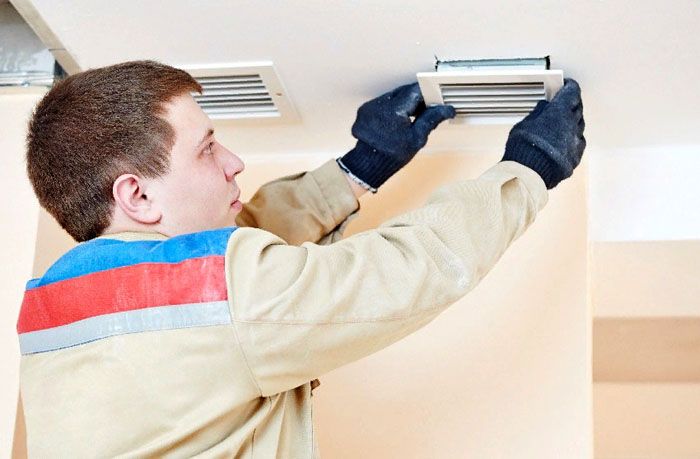
Careful installation will increase the durability of the 100 mm silent duct fan, other equipment model
Careful sealing of cracks will prevent the accumulation of dirt, the formation of mold, and other colonies of harmful microorganisms. Remove the cover regularly for cleaning. The frequency of the procedure is set taking into account specific conditions. In the most difficult situations, complete dismantling is required The above mentioned fastening on self-tapping screws is useful here.
Note! Some models provide for mandatory replacement of fine filters.
Is it possible to repair the duct fan yourself
The ability to restore performance depends on the nature of the breakdown, the qualifications of the contractor. In a duct fan of 200 mm (and in general of any diameter) it is not difficult to replace a damaged mesh partition, individual fastening elements, typical electronic parts, switches, indicators. It is not too difficult to make your own decorative panel exactly according to your individual requirements.
The rewinding of the coils of the electric motor is performed using special equipment. It is better to entrust such a task to specialists of a specialized workshop. The second acceptable option is to install a new power unit with similar technical characteristics. The assembly is carried out with the impeller precisely centered.
Prices, characteristics of modern models, recommendations for the correct purchase
| Brand / Model | Power consumption, W | Manufacturing duration, cubic meters / hour | price, rub. | Features: |
|---|---|---|---|---|
| 25 | 400 | 2200-3500 | Window, axial, noise level - 40 dB, heat overload protection. | |
| 14 | 105 | 430-1200 | Axial, duct fan for 100 mm exhaust, 37 dB. | |
| 78 | 455 | 3300-7800 | Waterproof performance. | |
| 25 | 320 | 2100-4800 | Moisture protection, 35 dB. | |
| 8 | 115 | 6100-8500 | Humidity sensor, electronic thermometer, programmable timer. |
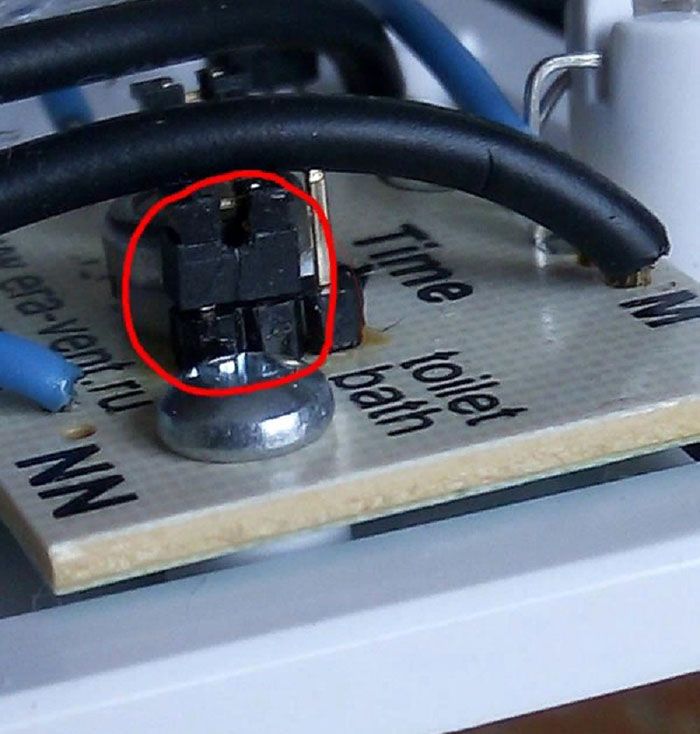
Exhaust fan Era-4. To enable the "bathroom" / "toilet" mode, you must set this block in the appropriate position
To clarify the assessment, the reviews of the owners will come in handy, who managed in practice to check the consumer characteristics of household fans for the hood:
Reviewed by neaborigen, Izhevsk: Advantages: Large selection in the retail network, low price compared to other manufacturers. For the bathroom, I chose the same model of the Era 4ETF fan, but with an additional option - a humidity sensor.
Disadvantages: Insufficient performance.
More details on otzovik: https://otzovik.com/review_5755408.html
topisv, Moscow: Pluses: Inexpensive, simple. Connected to the light switch. When you are in the bathroom, the fan is on. If you turn off the light, the work stops. Although it could be done offline. It is very quiet, so it does not interfere at all.
Disadvantages: Not found.
More details on otzovik: https://otzovik.com/review_3628078.html
Maua, Kramatorsk: Advantages: Closed type; backlight indicator; the fan does a good job with decorative functions. The axial fan itself is located inside the device, and the visible part is a perfectly smooth panel made of snow-white plastic and framed by thick glass. Dust, like the fan blades, is invisible, which means that it is very easy to care for the device.
Disadvantages: No.
More details on otzovik:http://otzovik.com/review_2393163.html
Not all reviews are absolutely correct. In some situations, excessive performance requirements are not justified due to poor calculation. In others, the owners rate the high noise negatively, although the manufacturer honestly indicated 42 dB in the accompanying documentation. For correct conclusions, the data given in the article should be used in combination. The more thorough the preliminary research, the less chance of errors. More information can be obtained using comments. Here you can share your own opinion about the advantages / disadvantages of individual models of hood fans.






